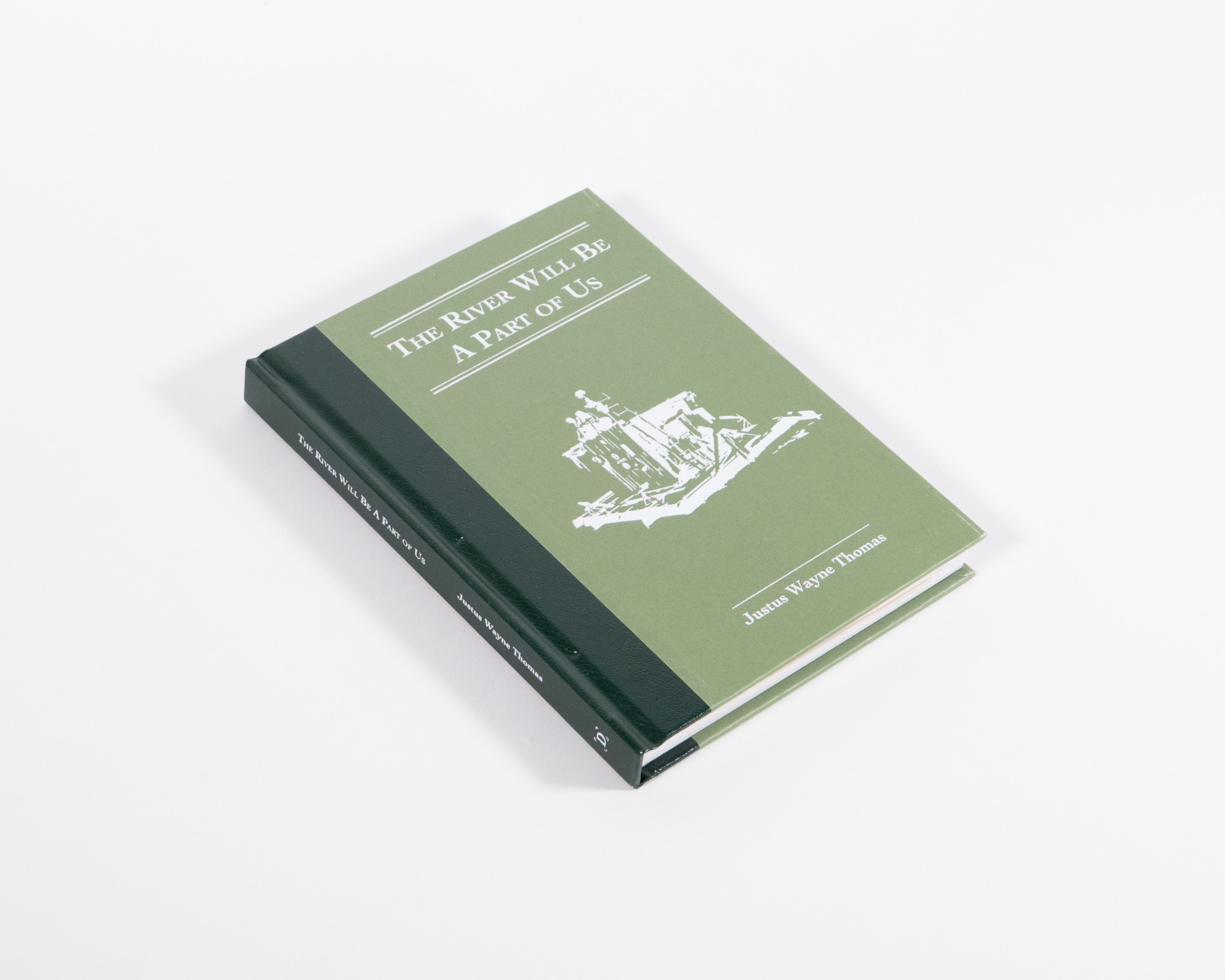Black Water Romance
Essay By TK Smith
It is romantic to imagine a group of friends leisurely floating down the Mississippi River on a raft they built with their own hands. Skin browning from exposure to the sun, they lounge along the raft’s wooden deck and let the current pull them along. Of course there would be laughter, perhaps as they shared their meals, and one can also imagine heated debates over the great philosophical questions: What is love? What is free will? Does the soul exist?

A great journey from Kansas City to New Orleans by way of the Missouri River and the mighty Mississippi is the stuff of mythology, fables from the days of fur traders and pioneers told around campfires and in the lyrics of folk songs. However fanciful it may seem, in 1981 photographer Justus Wayne Thomas and an assortment of friends, new and old, built a raft and embarked on their own twentieth-century epic, poetically captured in photographs.


Thomas, who was born and raised in Nashville, had almost no relationship to water, with no desire or ideation for floating before 1981. Shortly after graduating from Vanderbilt University, he was invited by his college friend Tom Bates to document a float trip—a leisurely cruise down a river by innertube, canoe, or raft—with his camera. The precedent for the trip occurred in 1979 during Thomas’s junior year studying abroad in an exchange program at the University of Regensburg in West Germany. Bates floated down the Danube River on an inflatable raft with a group of friends and was inspired to plan a float trip for the great rivers of the United States.

Although Thomas did not join the initial trip, he did spend his time abroad taking photographs using the Minolta SRT 201 that he borrowed from his parents. Never formally taught, Thomas honed his skills by creating photographs of Regensburg’s landscape and architecture, benefiting from a small darkroom found in the basement of student accommodations. When the call came in 1981, he packed his camera and a copy of The Adventures of Huckleberry Finn and headed west. The plan was to embark just outside Kansas City, Missouri, and float to New Orleans, Louisiana, on the Missouri and the Mississippi.

The trip resulted in a series of photographs belonging to the documentary photography genre that were captured by Thomas and other members of the crew. The genre is defined by its commitment to accurate representations of life and events. Thomas’s mission was to capture the experience of the journey in photographs that would be used to illustrate a book that Bates had intended to write but never did; the journal he kept to document the trip was tragically lost to the river during the final days of the journey. Through these lasting images, we can visualize the various logistics that made the seemingly improbable journey possible, as well as gain a sense of how it felt for the crew along the way.

Thomas made images documenting the ten-day construction of the raft in LaBenite Park near Independence, Missouri. The two-ton behemoth consisted of a 16' x 24' deck built with 6" x 6" lumber beams and two rigor beams made from a halved telephone pole. The wooden frame sat atop thirty-two 55-gallon empty and sealed oil drums, banded beneath the frame to keep the raft afloat. The raft had no motor and was steered by four 10-foot oars attached to the four corners of the deck. We see in the photographs that it would take one’s full body weight to drag the oar through the water. Atop the main deck sat a 48-square-foot cabin constructed of cottonwood that held food, books, clothing, and supplies. Dispelling any allusions to Huck Finn’s makeshift raft made from fine pine planks, Thomas’s images show us a sturdy vessel equipped with a transistor radio, an inflatable lifeboat, and a small gas oven.

Read the entirety of TK Smith's essay in Justus Wayne Thomas' The River Will Be A Part of Us
Justus Wayne Thomas
Justus Wayne Thomas has been making photographs since 1978. Now an attorney practicing in Nashville, his photographs have been exhibited in galleries across the country, including the SE Center for Photography, the A Smith Gallery and PhotoPlace Gallery.
TK Smith
TK Smith is an Atlanta-based curator, writer, and cultural historian.


